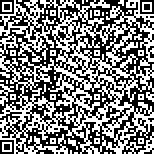| 本文已被:浏览 113次 下载 63次 |

码上扫一扫! |
| 中医治未病与前馈控制理论在精准预防结石复发中的应用研究 |
| 郑杨,张鑫,成向明,李柳林,卢子杰,周萍,王燕,马隆,丛小明,朱辰,陈雪花,黄卫周,陈凯华,金振华,高志翔,陈杏林,徐东亮,逄海港,徐彦 |
|
|
| 南京中医药大学第一附属医院泌尿外科南京 210000;南通市中医院泌尿外科南通226000;张家港市人民医院泌尿外科苏州215600;上海中医药大学附属曙光医院泌尿外科上海200000;中国人民解放军海军第九七一医院泌尿外科青岛571523 |
|
| 摘要: |
| 目的:探讨中医“治未病”结合前馈控制理论在精准预防结石复发中的临床效果与现代理念。方法:根据入组标准纳入草酸钙结石患者100例,随机分为对照组和观察组,每组50例。两组患者均接受常规结石预防指导,参考《中国泌尿外科和男科疾病诊断治疗指南》制定结石预防方案,按食物草酸含量制定统一的含草酸饮食限制食谱。观察组在对照组的基础上增加定期检测尿液结晶,定期监测晨尿结晶的种类、数量和结晶大小,制定含草酸饮食个体化预防食谱。根据尿结晶测定值定期修改食谱,尿结晶正常者可维持上月饮食量,如果超标则减少10%的含草酸饮食量。在开始随访和随访12个月后,比较两组复发情况,进行最大尿结晶直径尿液结晶检测、B超检查和焦虑评分情绪评估。结果:全部病例随访1年,观察组无结石复发,对照组5例复发,观察组预防成功率是100%,高于对照组的89.13%,差异有统计学意义(P <0.05)。观察组最大尿结晶直径随访后明显减小,对照组尿结晶直径随访前后无变化,且观察组最大尿结晶直径小于对照组,差异有统计学意义(P <0.05)。随访12个月后,两组焦虑评分均低于随访前,且观察组低于对照组,差异有统计学意义(P <0.05)。结论:中医“治未病”结合前馈控制理论制定的含草酸饮食限制食谱的个性化预防方案,可有效预防结石术后复发。 |
| 关键词: 前馈控制理论 治未病 结石复发 尿结晶 |
| DOI:10.3969/j.issn.1007-6948.2024.06.005 |
| 投稿时间:2024-06-01 |
| 基金项目: |
|
| Application study of precise prevention of kidney stones recurrence by integrating traditional chinese medicine "preventing diseases" with feedforward control theory |
| ZHENG Yang,ZHANG Xin,CHENG Xiang-ming,CHENG Xiang-ming |
| Department of Urology, the First Affiliated Hospital of Nanjing University of Traditional Chinese Medicine ,Nanjing (210000),China |
| Abstract: |
| Objective To explore the clinical effect of combining traditional Chinese medicine with feedforward control theory to accurately prevent stone recurrence. Methods 100 patients with calcium oxalate stones were included according to the inclusion criteria. They were randomly divided into a control group and an observation group, with 50 cases in each group. Both groups of patients received routine guidance on stone prevention, and a stone prevention plan was developed based on the “Chinese Guidelines for Diagnosis and Treatment of Urology and Andrology Diseases”. A unified dietary limit containing oxalic acid was formulated according to the oxalic acid content in the food. On the basis of the control group, the observation group will increase regular detection of urine crystals, regularly monitor the types, quantities, and sizes of morning urine crystals, and develop personalized preventive diets. Regularly modify the diet based on urine crystal measurements. Those with normal urine crystals can maintain their previous month's dietary intake. If they exceed the limit, reduce their oxalic acid intake by 10%. At the beginning of follow-up and the 12th month of follow-up, urine crystallization testing,ultrasound examination and emotional assessment were performed on both groups. Results All cases were followed up for 1 year, and there was no recurrence of stones in the observation group with oxalic acid dietary restriction, while there were 5 cases of recurrence in the control group (P <0.05). The success rate of prevention in the observation group was 100%, which was higher than the 89.13% in the control group (P <0.05). The maximum urinary crystal diameter in the observation group decreased significantly after follow-up, while there was no change in the urinary crystal diameter in the control group before and after follow-up. The maximum diameter of urine crystals in the observation group was smaller than that in the control group (P <0.05). After 12 months of follow-up, the anxiety scores of both groups were lower than before the follow-up, and the observation group was lower than the control group(P <0.05). Conclusion The personalized prevention plan based on the combination of traditional Chinese medicine's |
| Key words: Feedforward control theory preventive treatment of disease stone recurrence urine crystal |